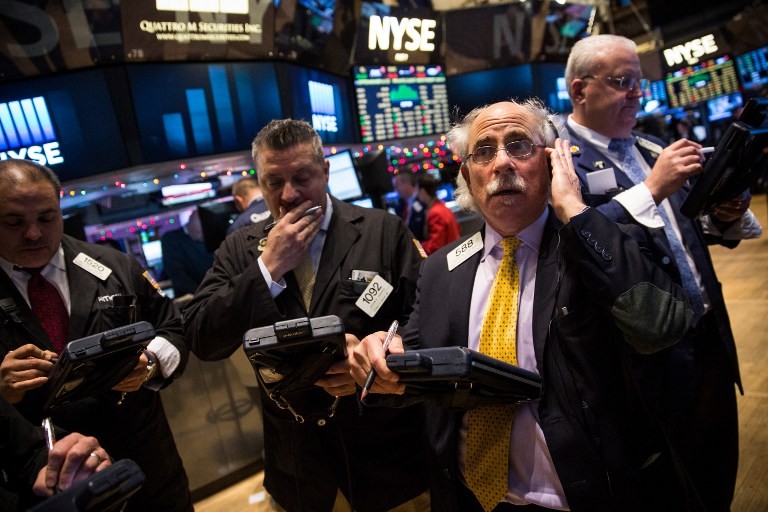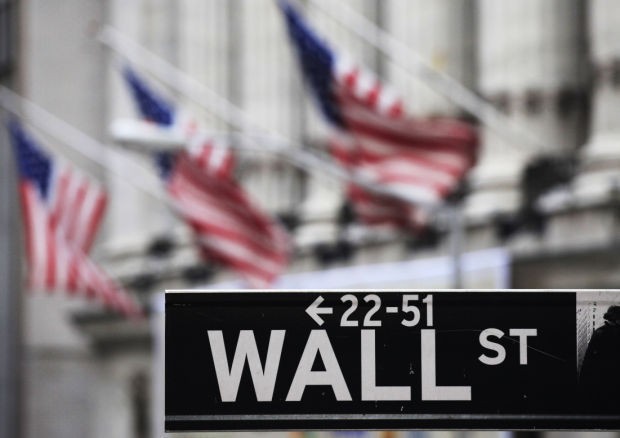Global bond market is fragile News
Post on: 2 Август, 2015 No Comment

Bond bust fears
Posted: Thursday, October 2, 2014 6:00 am
NEW YORK — A bottleneck is building in the global market for bonds.
Main Street investors have poured a trillion dollars into bonds since the financial crisis, and helped send prices soaring. As fund managers and regulators fret about an inevitable sell-off, the bigger fear is that when people go to unload, there won’t be anyone to buy.
Too many funds own the same bonds, making them difficult to sell in a sudden downturn. On top of that, the banks that used to bring bond buyers and sellers together have pulled back from the role. Investors looking to sell would be slow to find buyers, spreading fear through the $100 trillion global bond market and sending prices tumbling.
It’s a situation known as “liquidity risk” and some bond pros are scrambling to prepare for it.
Portfolio managers are hoarding cash. BlackRock, the world’s largest fund manager, is suggesting regulators consider new fees for investors pulling out of funds. Apollo Management, famous for profiting from a bond collapse 25 years ago, is launching a fund to bet against bonds.
Mohamed El-Erian, former CEO of bond fund giant Pimco, thinks ordinary investors are too blasi about the flaws in the trading system. Investors today are like homeowners who only discover there’s a clog under the sink when it’s too late and they’re staring at a mess.
“It’s only when you try to put a lot of things through the pipes that you realize” you’ve got a problem, says El-Erian, now chief economic adviser to global insurer Allianz. “You get an enormous backup.”
What’s at risk is more than money in retirement accounts. Big investors often borrow when buying bonds and so losses can be magnified. Trillions of dollars of bets using derivatives ride on bonds, too. A small fall in prices could lead to losses that reverberate throughout the financial system.
“The market is so tightly wound,” says JPMorgan’s William Eigen, head of its Strategic Income Opportunities fund, who has put 63 percent of his portfolio in cash. “There’s no place to hide.”
In such a fragile situation, even news with no bearing on bond fundamentals can trigger losses.
Since Pimco star manager Bill Gross announced Friday that he was quitting, investors have been pulling billions out of the company’s flagship Total Return Fund, adding to withdrawals topping $23 billion in September alone. Other Pimco funds have lost investors, too. That has forced their managers to sell into an illiquid market and pushed down prices of some bonds sharply, says Guy LeBas, chief bond strategist at Janney Montgomery Scott. In the two trading days following Gross’ announcement, an index tracking “junk” bonds issued by risky companies dropped 0.74 percent, a big move.
HIGH PRICES
Since the financial crisis, the Federal Reserve’s efforts to hold down borrowing costs for businesses and consumers have pushed interest payments on many bonds to record lows. That’s set off a rush by investors into riskier ones offering higher payments. The buying has pushed up prices, and added to the risk. Since the start of 2009, funds invested in junk bonds have returned an average 14 percent each year and municipal bond funds 6 percent, according to the Investment Company Institute, double their averages in the prior six years.
Even seemingly “safe” government debt looks dangerous now, according to a September report by Deutsche Bank. Many bonds sold by wealthy countries like France, Australia and Britain recently are so high-priced you’d have to go back centuries to find more expensive ones, the report notes. And since corporate bonds are priced off government ones, much of that market is also at risk for a fall.
Meanwhile, the quality of the bonds offered for sale continues to drop. Companies stripped half of their new junk loans and bonds last year of protections that investors usually demand, according to the International Monetary Fund. Still, they were able to sell a near record amount of them. The government of Ecuador defaulted on its debt just five years ago, but it had so much demand for its bonds in a $2 billion sale in June, it could have raised more than double that amount.
The conclusion of Deutsche’s 104-page report is that some bonds are “exhibiting bubble tendencies.” The IMF is worried, too. In its own recent report, it warned of possible “fire sales” for some bonds.
PLUMBING PROBLEM
To trade most corporate and municipal bonds, you have to phone or email brokers at banks and other firms who pair buyers and sellers. If they can’t find a match for you, they dip into their own stash of bonds to buy and sell themselves.
But banks and other middlemen are pulling back from this matchmaking because of new regulations limiting their activities. And they have largely abandoned their role as a buyer or seller of last resort. They’ve slashed their stash of bonds by 80 percent since 2007, according to State Street Global Advisors.
The result is that buyers and sellers in the $50 trillion global market for corporate and muni bonds are struggling to find each other, and the frequency of trades has plunged. The average muni bond now changes hands half as much as it did in 2006, according to BlackRock. In corporate bonds, trading has dropped by more than a third.
In such an illiquid market, prices have fallen fast several times in the past year.
After the Fed hinted at a pullback from its bond-buying program last year, bonds from the safest “investment grade” companies fell 6.2 percent in less than two months, according to Barclays Capital.
As selling rippled around the world, some fund managers found themselves dumping bonds they would normally keep. Managers initially sold bonds issued in foreign currencies from companies in Indonesia, Turkey, South Africa and Brazil, countries most at risk if U.S. interest rates rose.
Then contagion struck. It became difficult to unload those bonds at decent prices, because so many funds in these “crowded trades” were trying to dump them. So managers desperate to shore up their funds started selling bonds from relatively healthy countries like Peru, the Philippines and South Korea, says Manoj Pradhan, a senior economist at Morgan Stanley.
“It’s the old adage: When you can’t sell what you want to sell, you sell what you can,” Pradhan says.

Bonds bounced back when the Fed delayed its withdrawal of stimulus. But fund manager Michael Lewitt of the Credit Strategist Group is warning investors not to fool themselves that the worst in over. “When there’s little liquidity, it doesn’t take many sales to move the price,” he says.
Investment firm Franklin Square Capital Partners also suspects another downturn is coming, and is raising cash to exploit any panic. Says Executive Vice President Zachary Klehr, “Forced sellers create ideal buying opportunities.”
THE FED RISK
Now, the U.S. central bank, which has done so much to lift prices, is threatening to knock the market from its perch. The Fed plans to end its own bond-buying program after its next meeting in October, and is widely expected to raise short-term interest rates it controls next year. Bond investors have occasionally sold in a panic when these rates have risen in the past.
What will happen to bonds when the Fed hikes rates this time?
The last time it started raising them in 2004, investors barely flinched. The time before that, in 1994, they fled in panic. The Fed surprised investors with six hikes in 10 months, and bond funds lost a record 2.8 percent.
The drop may seem small, but the damage was widespread. Big investors like hedge funds were hit hard. Orange County, California, went bankrupt. The Standard and Poor’s 500 stock index fell 9 percent in three months.
Today the Fed is telegraphing its every move and most investors think it will raise rates in slow and predictable increments. And all that cash that fund managers hold will help, too. Cash comprised 8.8 percent of assets in August, versus 6.3 percent before last year’s sell-off in May, according to the Investment Company Institute.
That cash helped in a recent scare. Fearing the Fed might raise rates faster than expected, investors pulled billions of dollars out of junk bond funds in July. But many fund managers were able to the pay the investors without causing a panic. By the end of the month, the funds had fallen an average of 1.2 percent, according to Morningstar.
“Everyone thought it would be a blood bath,” says Marilyn Cohen, founder of Envision Capital, a bond manager. The story is “crisis averted, for now.”
But other signs in the market aren’t so reassuring. Insurers and pension funds that tend to hold their bonds through booms and busts and stabilize the market are playing a smaller role. They own 25 percent of all corporate bonds, down from 40 percent in 2000, according to the IMF.
That lion’s share now goes to Main Street buyers who are more short-term and easily spooked. They buy their bonds mostly through mutual and exchange-traded funds, vehicles for quick-trading that have doubled in number since the crisis.
Hans Mikkelsen, global credit strategist at Bank of America Merrill Lynch, thinks the shift could lead to big trouble in the next rate hike.
“The market isn’t pricing in the risk that it’s going to be like 1994, or even worse,” he says.














